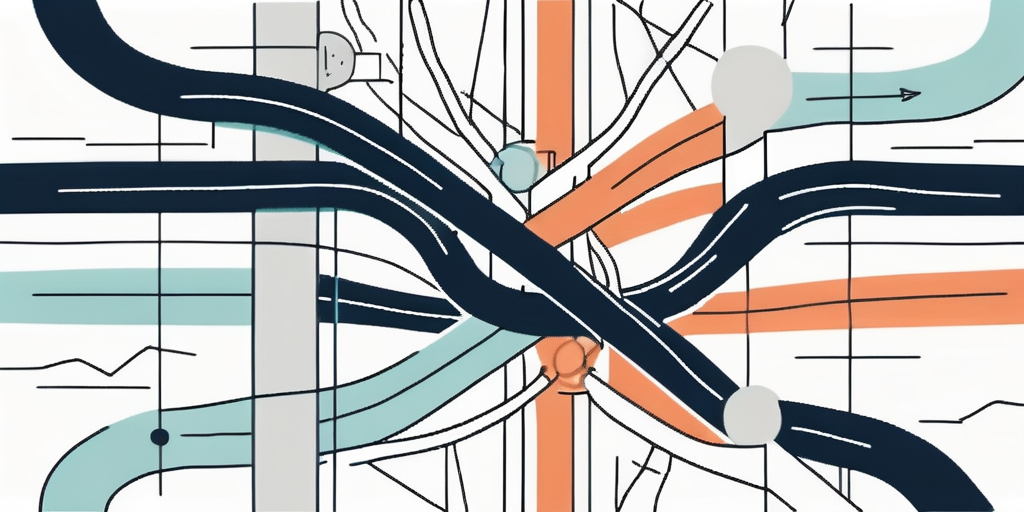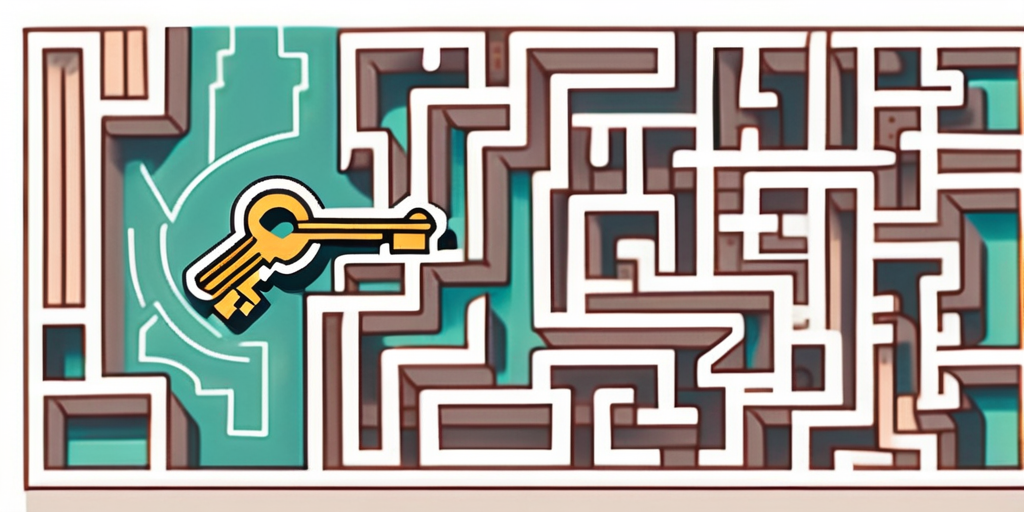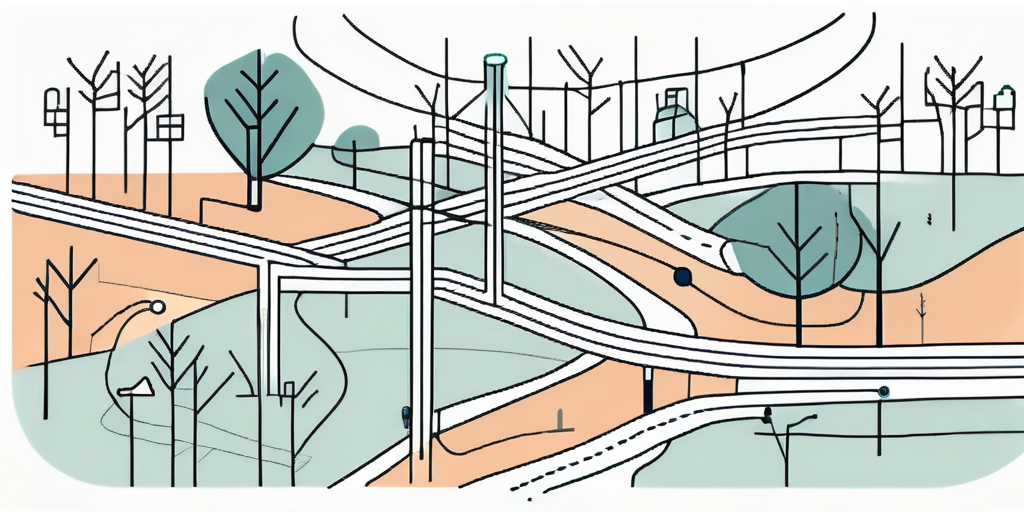In today’s fast-paced and complex world, the ability to solve problems is an essential skill that can greatly impact our personal and professional lives. Whether it’s finding a solution to a technical issue or resolving a conflict with a colleague, problem solving is a valuable tool that can help us overcome challenges and achieve our goals. In this article, we will explore the concept of problem solving, the stages involved, various problem-solving techniques, common barriers, and ways to enhance this critical skill.
The Concept of Problem Solving
At its core, problem solving can be defined as the process of finding solutions to issues or challenges that arise in different situations. It involves identifying the problem, evaluating potential solutions, and implementing the most effective one.
Problem solving is a fundamental aspect of human cognition and is essential for navigating the complexities of everyday life. From solving puzzles and riddles to addressing complex societal issues, problem solving is a skill that we constantly rely on.
When faced with a problem, our brains engage in a series of cognitive processes to analyze the situation, generate possible solutions, and evaluate their potential effectiveness. This cognitive process involves critical thinking, logical reasoning, and creativity.
Defining Problem Solving
Problem solving is not just about finding quick fixes; it is about addressing the root cause of a problem and devising sustainable solutions. It requires analytical thinking, logical reasoning, creativity, and open-mindedness.
Analytical thinking involves breaking down complex problems into smaller, more manageable parts, allowing us to better understand the underlying issues. Logical reasoning helps us make sense of the information available and identify patterns or connections that can lead to potential solutions.
Creativity plays a crucial role in problem solving by enabling us to think outside the box and come up with innovative solutions. It involves exploring different perspectives, challenging assumptions, and considering alternative approaches.
Open-mindedness is also essential in problem solving, as it allows us to consider different viewpoints and ideas. By being open to new possibilities, we can expand our problem-solving repertoire and increase the likelihood of finding effective solutions.
The Importance of Problem Solving Skills
Effective problem solving skills are crucial for success in various areas of life. Whether it’s in our personal or professional lives, being able to tackle challenges effectively can lead to personal growth, improved decision-making, and enhanced problem-solving abilities.
In the workplace, problem solving skills are highly valued by employers. Employees who can identify and resolve issues efficiently contribute to a more productive and efficient work environment. They are also better equipped to handle unexpected situations and adapt to changing circumstances.
Outside of work, problem solving skills are equally important. They enable us to navigate personal relationships, make informed decisions, and overcome obstacles that may arise in our daily lives. By developing strong problem solving skills, we can approach challenges with confidence and resilience.
Furthermore, problem solving skills are not limited to specific domains or professions. They are transferable skills that can be applied across various contexts. Whether you are a scientist, an artist, a teacher, or a parent, the ability to effectively solve problems is invaluable.
Overall, problem solving is a multifaceted skill that requires a combination of cognitive abilities and a mindset that embraces challenges. By honing our problem solving skills, we can become more adept at finding innovative solutions and navigating the complexities of life.
The Stages of Problem Solving
Problem solving typically involves several stages that help guide the process from identifying the problem to implementing and evaluating the solution. Let’s explore these stages in detail:

Identifying the Problem
The first step in problem solving is identifying the issue at hand. This requires careful observation, gathering relevant information, and clarifying the problem’s scope and impact.
During the process of identifying the problem, it is crucial to engage in active listening and effective communication. This allows for a comprehensive understanding of the problem and ensures that all stakeholders are involved. Additionally, conducting thorough research and analysis aids in identifying the root cause of the problem, which is essential for developing effective solutions.
Developing Potential Solutions
Once the problem is identified, the next step is brainstorming and generating potential solutions. This is where creativity and critical thinking come into play. It’s important to consider various perspectives and evaluate the pros and cons of each potential solution.
During the brainstorming phase, it is beneficial to encourage a diverse range of ideas and perspectives. This can be achieved through group discussions, individual reflection, or even seeking external input. By exploring multiple solutions, one can increase the chances of finding the most innovative and effective approach.
Implementing and Evaluating the Solution
After choosing the most promising solution, it’s time to put it into action. This involves developing an implementation plan, allocating necessary resources, and monitoring progress. Once implemented, it’s important to evaluate the solution’s effectiveness and make adjustments if needed.
During the implementation phase, effective project management skills are crucial. This includes setting clear goals, establishing timelines, and assigning responsibilities. Regular monitoring and evaluation of the solution’s progress help identify any potential challenges or areas for improvement. By continuously assessing the solution’s effectiveness, one can ensure that it aligns with the desired outcomes and makes a positive impact.
Problem solving is not a linear process, but rather an iterative one. It often requires revisiting previous stages and making adjustments based on new information or unexpected obstacles. By embracing flexibility and adaptability, problem solvers can navigate through the complexities of finding and implementing effective solutions.
Problem Solving Techniques
When faced with a problem, it’s essential to have a set of techniques and tools to aid in the problem-solving process. These techniques not only help in finding solutions but also encourage creativity and critical thinking. Let’s explore a few commonly used problem-solving techniques:
Brainstorming
Brainstorming is a technique that encourages free thinking and idea generation. It involves gathering a group of individuals with diverse backgrounds and perspectives to generate a wide range of ideas without criticism or judgment. The goal is to create an environment where creativity can flourish, leading to unique and innovative solutions. During a brainstorming session, participants can build upon each other’s ideas, sparking new thoughts and possibilities.
For example, imagine a team working on a project to improve customer satisfaction for a company. During a brainstorming session, team members may suggest ideas such as implementing a loyalty program, enhancing customer service training, or developing a user-friendly mobile app. By allowing all ideas to be expressed without evaluation, the team can explore various possibilities and consider unconventional approaches.
Root Cause Analysis
Root cause analysis is a systematic approach to problem solving that focuses on identifying the underlying causes of an issue. It aims to dig deep and understand the core problem rather than merely addressing its symptoms. By uncovering the root cause, it becomes possible to develop targeted solutions that address the fundamental issue.
For instance, let’s say a manufacturing company is experiencing a high rate of product defects. Instead of simply fixing the defects as they occur, a root cause analysis would involve investigating the factors contributing to the defects. This analysis may reveal issues such as faulty machinery, inadequate training, or ineffective quality control processes. By addressing these underlying causes, the company can implement long-term solutions that prevent future defects and improve overall product quality.
Decision Matrix Analysis
A decision matrix is a tool used to evaluate multiple options based on predefined criteria. It provides a structured approach to decision-making by visually comparing various solutions and considering their respective advantages and disadvantages. This technique helps in making informed decisions and selecting the most suitable solution.
For example, imagine a project manager tasked with selecting a software vendor for a company’s new customer relationship management (CRM) system. The decision matrix would include criteria such as cost, functionality, user-friendliness, and customer support. Each potential vendor would be evaluated and scored based on these criteria, and the decision matrix would provide a clear visual representation of the strengths and weaknesses of each option. This analysis enables the project manager to make an objective and well-informed decision that aligns with the company’s needs and goals.
By utilizing problem-solving techniques like brainstorming, root cause analysis, and decision matrix analysis, individuals and teams can approach problems in a structured and effective manner. These techniques not only help in finding solutions but also foster collaboration, critical thinking, and innovation.

Barriers to Effective Problem Solving
Despite the benefits of problem solving, there can be barriers that hinder the process. Let’s explore a few common barriers:
Cognitive Biases
Cognitive biases are inherent mental shortcuts that can affect judgment and decision-making. These biases may lead to faulty reasoning, overlooking crucial information, or favoring familiar solutions over more effective ones.
One example of a cognitive bias is confirmation bias, where individuals tend to seek out information that confirms their existing beliefs or hypotheses while ignoring contradictory evidence. This can limit their ability to consider alternative perspectives and hinder problem-solving efforts.
Another cognitive bias is the availability heuristic, which is the tendency to rely on immediate examples or information that comes to mind easily. This can lead to overlooking less accessible but potentially relevant information, limiting the effectiveness of problem-solving approaches.
Overcoming cognitive biases requires self-awareness and a willingness to challenge one’s own assumptions. By actively seeking out diverse perspectives and considering a wide range of information, individuals can mitigate the impact of cognitive biases on problem-solving processes.
Lack of Information
Insufficient or inaccurate information can impede problem-solving efforts. Without a comprehensive understanding of the problem and relevant data, it becomes challenging to develop effective solutions.
One way to address this barrier is through thorough research and data collection. By gathering relevant information from reliable sources, individuals can gain a deeper understanding of the problem at hand. This may involve conducting surveys, interviews, or analyzing existing data sets to gather insights.
Additionally, collaboration and seeking input from others can help fill in knowledge gaps. By engaging with individuals who have different perspectives or expertise, new information and insights can be gained, leading to more effective problem-solving approaches.
It’s also important to critically evaluate the information gathered, ensuring its accuracy and relevance. By verifying the credibility of sources and cross-referencing data, individuals can make more informed decisions and overcome the barrier of a lack of information.
Emotional Barriers
Emotions such as fear, stress, or frustration can cloud judgment and hinder problem-solving abilities. It’s important to cultivate emotional intelligence and manage emotions effectively to maintain a clear and objective mindset.
One way to address emotional barriers is through mindfulness and self-reflection. By developing awareness of one’s emotions and their impact on decision-making, individuals can better regulate their emotional responses and prevent them from interfering with problem-solving processes.
Practicing stress management techniques, such as deep breathing exercises or engaging in physical activity, can also help reduce the impact of negative emotions on problem-solving abilities. Taking breaks and allowing time for relaxation and self-care can contribute to a clearer and more focused mindset.
Furthermore, fostering a supportive and collaborative environment can help individuals feel more comfortable expressing their emotions and seeking assistance when needed. By creating a safe space for open communication, emotional barriers can be minimized, allowing for more effective problem-solving.
By understanding and addressing these barriers, individuals can enhance their problem-solving skills and overcome challenges more effectively. Problem solving is a valuable skill that can be developed and improved with practice, and by recognizing and addressing these barriers, individuals can become more adept at finding innovative and effective solutions.
Enhancing Your Problem Solving Skills
While some individuals may possess natural problem-solving abilities, it is a skill that can be developed and honed over time. Here are a few ways to enhance your problem-solving skills:

Critical Thinking
Critical thinking involves analyzing information objectively, questioning assumptions, and considering alternative perspectives. Practicing critical thinking can help improve problem-solving abilities by fostering a logical and rational approach.
One way to develop critical thinking skills is through engaging in thought-provoking discussions and debates. By actively participating in conversations that challenge your beliefs and encourage you to consider different viewpoints, you can expand your thinking and develop a more comprehensive understanding of complex problems.
Additionally, reading books and articles that present diverse perspectives on various subjects can also contribute to the development of critical thinking skills. By exposing yourself to different ideas and arguments, you can learn to evaluate information critically and make informed decisions.
Creativity and Innovation
Embracing creativity and innovation can encourage thinking outside the box and finding unique solutions. Engaging in activities such as brainstorming or exploring new ideas and perspectives can stimulate creativity and foster innovative problem-solving approaches.
One effective way to foster creativity is through the practice of divergent thinking. This involves generating multiple ideas and possibilities without judgment or evaluation. By allowing yourself to think freely and without constraints, you can uncover new and unconventional solutions to problems.
Furthermore, seeking inspiration from different sources can also enhance your creativity. Exploring different art forms, such as painting, music, or literature, can expose you to different ways of thinking and spark new ideas. Additionally, immersing yourself in nature or taking part in outdoor activities can provide a fresh perspective and stimulate creative thinking.
Persistence and Patience
Problem-solving can be challenging and may require multiple attempts to find the most effective solution. It’s important to remain persistent and patient, understanding that setbacks and failures are part of the learning process.
Developing a growth mindset can greatly contribute to persistence and patience. Embracing the belief that abilities and intelligence can be developed through dedication and hard work can help you stay motivated and resilient in the face of obstacles. Instead of viewing failures as permanent setbacks, see them as opportunities for growth and learning.
Moreover, seeking support from others can also help you maintain persistence and patience. Surrounding yourself with individuals who share your goals and values can provide encouragement and motivation during challenging times. Collaborating with others can also bring fresh perspectives and ideas to the problem-solving process.
Remember, enhancing problem-solving skills is an ongoing journey. By continuously practicing critical thinking, embracing creativity, and cultivating persistence and patience, you can become a more effective problem solver in various aspects of your life.
The Role of Problem Solving in Everyday Life
Problem-solving skills play a vital role in our everyday lives, both personally and professionally. Let’s explore how problem solving impacts different areas:

Problem Solving in Personal Life
In our personal lives, problem solving helps us navigate challenges, make decisions, and overcome obstacles. Whether it’s managing personal relationships, resolving conflicts, or finding creative solutions to household problems, effective problem solving enhances our daily lives.
For example, imagine you are planning a surprise birthday party for a loved one. You encounter various challenges along the way, such as finding the perfect venue, coordinating with guests, and organizing the event. By employing problem-solving skills, you can brainstorm ideas, create a timeline, and address any unexpected issues that may arise. This not only ensures a successful surprise party but also showcases your ability to think critically and find solutions.
Problem Solving in Professional Life
In the professional realm, problem-solving skills are highly valued by employers. Being able to identify and resolve work-related issues can lead to increased productivity, improved teamwork, and career advancement. Effective problem solving is a key competency for success in various professions.
Consider a scenario where you work in a customer service role. You encounter a dissatisfied customer who has a complex issue that needs to be resolved promptly. By utilizing problem-solving skills, you can actively listen to the customer’s concerns, analyze the situation, and propose appropriate solutions. This not only resolves the issue but also showcases your ability to handle challenging situations professionally, leaving a positive impression on both the customer and your employer.
Problem Solving in Society
At a broader level, problem solving contributes to societal progress. Many global challenges require collective problem-solving efforts, such as finding sustainable solutions to environmental issues, addressing social inequalities, or improving public services. Effective problem solving can lead to positive societal change.
For instance, let’s consider the issue of climate change. Solving this complex problem requires the collaboration of scientists, policymakers, and individuals from various fields. By employing problem-solving skills, experts can analyze data, propose innovative solutions, and implement strategies to mitigate the effects of climate change. This collective problem-solving effort can lead to a more sustainable future for generations to come.
In conclusion, problem solving is a fundamental skill that plays a significant role in our lives. By understanding the concept, mastering problem-solving stages, and employing various techniques, we can enhance our ability to overcome challenges and achieve desired outcomes. Developing strong problem-solving skills not only benefits us personally and professionally but also contributes to broader societal progress. So, let’s embrace problem solving and harness its power to shape a better future.